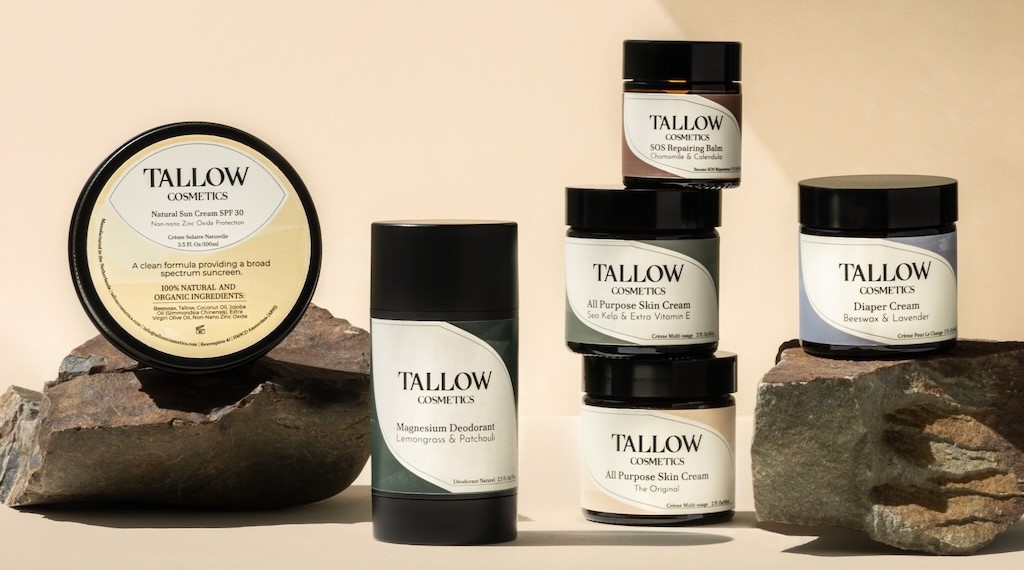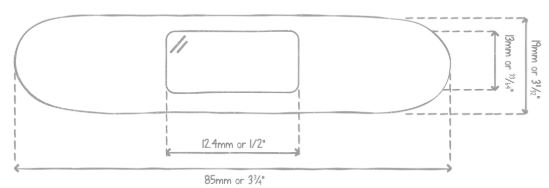Bamboo Patches - Aloe Vera puchýře a drobné popáleniny - 25 ks

Za nákup Vám přičteme:
+215.5 Bodů do Bonusového programuThe Patch patches are all made from certified, 100% organic bamboo fibers and a special hypoallergenic adhesive, Pressure Sensitive Adhesive (PSA), based on a combination of natural minerals and nanotechnology. Thanks to it, it holds perfectly, but at the same time does not irritate the skin. Thanks to the bamboo fibres, the patches are breathable and the injuries heal faster.
Bamboo is one of the so-called raw materials of the future. It is a sustainable resource - it grows very quickly, is low on water and nutrition and has multifunctional uses.
The composition of the patches is also suitable for vegans (some types of adhesives may contain animal ingredients). The stylish paper box will look great in your home medicine cabinet.
The patches are of course free of latex, parabens or thimerosal. They are not tested on animals. It is therefore no surprise that Patch became the 2020 WINNER of the American Expo West NEXTY AWARDS in the CONSUMER CHOICE category as you can see in the product photo.
Benefits of aloe vera patches
The gauze of the patches is enriched with aloe vera extract. This plant is known for its healing and soothing effects. It contains two powerful natural compounds - polysaccharides and glycoproteins, which help in wound healing.
The pack contains 25 patches in natural shade.
Patch size
Additional parameters
| Category: | Patches |
|---|---|
| EAN: | 9351347000033 |
| Výrobce: | Nutricare Pty Ltd., 4 Bricker St, Cheltenham VIC 3192, Australia |
| Země původu: | Austrálie |
| Vhodné pro: | Ekzém-Citlivá pokožka-Vegan-Těhotné-Děti |
| Obal: | Papírová tuba (kompostovatelná) |
| The item has been sold out… | |
Patch - Bambusové náplasti: Návod k použití
Patch - Bambusové náplasti: Proč je zvolit
Patch - Natural Bamboo Compostable Bandages - Meet The Maker...
Patch - Organic Bamboo Strips
Patch - Review
Sustainable, Bamboo Strips. How Patch and founder James Dutton are making waves.
Be the first who will post an article to this item!
Be the first who will post an article to this item!
 The Patch brand was founded in 2016 by James Dutton. The impetus for this was his two sons - one was allergic to plasters and the other hated any antiseptic or healing product applied to his skin. After researching conventional patches, James discovered that there are a number of chemicals in their ingredients that are definitely not suitable for allergy sufferers, but should also be avoided by the average user. He decided to invent a natural hypoallergenic patch that would not only protect the wound but also help speed up its regeneration, eliminating the need to apply other healing products.
The Patch brand was founded in 2016 by James Dutton. The impetus for this was his two sons - one was allergic to plasters and the other hated any antiseptic or healing product applied to his skin. After researching conventional patches, James discovered that there are a number of chemicals in their ingredients that are definitely not suitable for allergy sufferers, but should also be avoided by the average user. He decided to invent a natural hypoallergenic patch that would not only protect the wound but also help speed up its regeneration, eliminating the need to apply other healing products.
Conventional plasters should be avoided...
 The main problem with commonly available patches is their virtually undetectable composition. Try googling the ingredients of the patches you have in your medicine cabinet at home or check the box. You will probably find that the patches consist of a pad that is made of treated cotton and other natural and treated fibers. In most cases, this cotton is chlorine bleached, as is the case with pads, tampons and other sanitary products.
The main problem with commonly available patches is their virtually undetectable composition. Try googling the ingredients of the patches you have in your medicine cabinet at home or check the box. You will probably find that the patches consist of a pad that is made of treated cotton and other natural and treated fibers. In most cases, this cotton is chlorine bleached, as is the case with pads, tampons and other sanitary products.
The patch itself can be made of PVC, PE or PU, or fabric. In the case of plastic, although it is more or less waterproof, it again does not allow the injury to breathe and slows down the natural healing process. In the case of the cloth patch, the same problem with chemical chlorine bleaching is again. The adhesive that holds the patches to the skin is usually either latex or acrylic based. Both substances can cause allergic reactions. In addition, some types of adhesives are still mixed with animal ingredients and are not suitable for vegans and sometimes not even for vegetarians.
What we don't see and practically don't find out is that the patch pad or the patch itself may be infused with other substances such as parabens, thimerosal and others in addition to toxic bleaches. To learn more, read the article on Patch.

.jpg)























































![PATCH - Bambusové náplasti s aloe vera [25 ks]](https://cdn.myshoptet.com/usr/www.pravebio.cz/user/shop/big/1211-5_patch-bambusove-naplasti-s-aloe-vera--25-ks-.jpg?66db503c)
![PATCH - Bambusové náplasti s aloe vera [25 ks]](https://cdn.myshoptet.com/usr/www.pravebio.cz/user/shop/related/1211-5_patch-bambusove-naplasti-s-aloe-vera--25-ks-.jpg?66db503c)
![PATCH - Bambusové náplasti s aloe vera [25 ks]](https://cdn.myshoptet.com/usr/www.pravebio.cz/user/shop/related/1211_patch-bambusove-naplasti-s-aloe-vera--25-ks-.jpg?66db503c)
![PATCH - Bambusové náplasti s aloe vera [25 ks]](https://cdn.myshoptet.com/usr/www.pravebio.cz/user/shop/related/1211-3_patch-bambusove-naplasti-s-aloe-vera--25-ks-.jpg?66db503c)
![PATCH - Bambusové náplasti s aloe vera [25 ks]](https://cdn.myshoptet.com/usr/www.pravebio.cz/user/shop/related/1211-1_patch-bambusove-naplasti-s-aloe-vera--25-ks-.jpg?66db503c)
![PATCH - Bambusové náplasti s aloe vera [25 ks]](https://cdn.myshoptet.com/usr/www.pravebio.cz/user/shop/related/1211-4_patch-bambusove-naplasti-s-aloe-vera--25-ks-.jpg?66db503c)
![PATCH - Bambusové náplasti s aloe vera [25 ks]](https://cdn.myshoptet.com/usr/www.pravebio.cz/user/shop/related/1211-2_patch-bambusove-naplasti-s-aloe-vera--25-ks-.jpg?66db503c)



![PATCH - Bambusové náplasti Natural [25 ks]](https://cdn.myshoptet.com/usr/www.pravebio.cz/user/shop/detail/1199_patch-bambusove-naplasti-natural--25-ks-.jpg?66db503c
)












